International Journal of Agricultural Science and Food Technology
Process optimization of extruded noodles from Cocoyam (Colocasia Esculenta) and Bambara groundnut (Vigna Subterranea) flour
Bulus Daniel Sadiq* and Zokti James Alkali
Cite this as
Sadiq BD, Alkali ZJ (2022) Process optimization of extruded noodles from Cocoyam (Colocasia Esculenta) and Bambara groundnut (Vigna Subterranea) flour. Int J Agric Sc Food Technol 8(4): 286-292. DOI: 10.17352/2455-815X.000180Copyright License
© 2022 Sadiq BD, et al. This is an open-access article distributed under the terms of the Creative Commons Attribution License, which permits unrestricted use, distribution, and reproduction in any medium, provided the original author and source are credited.A noodle is a thin, long strip of spaghetti or a similar flour paste consumed with a sauce or taken with warm water with sugar and milk added as desired. In this regard, a modified noodle was produced from cocoyam with Bambara ground nut added to enhance the nutritional composition of the noodle. Central Composite Design (CCD) using Response Surface Methodology (RSM) was used in the optimization procedure. The aim was to develop the best mix of procedure variables that can give optimum formulation with a high protein. The process variables were feed composition (X1), barrel temperature (X2), and feed moisture composition (X3). The responses were moisture, protein, fat, and fiber. Regression models and residual plots were generated and adequacy was tested with regression coefficient (R2) and the lack of fit test. Results of the analysis of variance (ANOVA) indicated that the process variables had a significant effect on the protein (p < 0.05). Results for regression coefficients prove a fair fit of the model. The optimum noodle had 60g of Bambara ground nut, 120 oC barrel temperature, and 16% moisture content. Its responses were 10.66 mg/100g protein, 0.95 mg/100g fat, 1.60 mg/100g ash, and 1.75 mg/100g fiber. The optimized recipe shows improve nutrients.
Introduction
The imperative for more agricultural produce to meet the need of ever-growing citizens in Africa where the increasing rate is more than the rate of growth in agricultural production had been long stressed World Bank [1]. In the last ten years, awareness has been geared toward eliminating food insecurity and hunger the world over. Sanusi [2] reported that the average number of food-insecure families in Nigeria was 18% in 1996 and over 40% in 2005. Per capita increase in the production of major food items has not been adequate to satisfy the need of an increasing population. Cocoyam is farmed as a root crop because of its eatable corms and leaves which are eaten as vegetable leaves throughout the tropics (Mbanaso 1991). The crop now assents as a crop that can warranty food security because it is relatively cheap and could therefore feed many poor households. In terms of nutrients, composition cocoyam contains 70% - 80% water, 20% - 25% starch, and 15% -30% protein [3]. Its leaves are good sources of folic acid, vitamin C, riboflavin, and vitamin A. There is also sufficient mucilage in cocoyam which can be utilized in the paper industry and medicine tablet production despite the economic import of cocoyam its prospects have not only been ignored but also underused.
In spite of the tremendous nutritional prospects of cocoyam corms obtainable from its uses, it is not economically achievable until it is first purified to reduce its high level of antinutrient content calcium oxalate levels. This fusion negatively affects the corm usage, imparting acridity and a bitter-astringent mouth feel [3.4]. Furthermore, this antinutrient principle contains toxic effects which represent a health hazard for humans when eaten in high concentration.
In recent years climate change has led to decreased agricultural output thereby seriously affecting food availability. Researchers advocate increased farming of native drought-forbearing crops like legumes Bambara groundnut Vigna subterranean (L.) Verdc, whose high resistance to drought makes it acceptable for semi-arid areas where other crops don’t thrive.
Bambara groundnut is a high-protein food product that can add value to the nutritional standard of rural households. The proximate and the nutrient content indicate that Bambara groundnut is almost a complete diet. Bambara groundnut was discovered to be richer in vital amino acids than most grains with a protein content of about 80% as compared to 65% for groundnut, 74% for soybeans, and 64% for cowpea. Bambara groundnut contains micronutrients, e.g. zinc, iron, calcium, and potassium. The seeds are eaten as snacks after boiling them for about an hour. The dry seeds are boiled after socking for several hours to make porridge. The dried seeds are challenging to process because of their hard seed coat. The seeds are ground to flour, which flat small cakes and bread are baked from it, or may be added to soups as thickeners in some parts of Nigeria.
Bambara groundnuts are roasted and milled, and the flour is used to make soups. Additionally, thin and stiff porridge can be made from Bambara groundnut flour. In spite of all these likely applications and their nutritional importance, Bambara groundnut remains scientifically overlooked and underutilized. The main motive for the under-exploitation is the hard-to-cook (HTC) occurrence in combination with inappropriate processing procedures. HTC in legumes is responsible for the prolonged cooking time (3–4hrs) needed to ensure adequate softening during cooking. HTC in legumes is correlated with anatomical cell reorganization (e.g. metabolism of cytoplasmic organelles and hardening of central lamella) and changes in the composition, e.g. development of insolvable pectate and reactions of proteins and synthetic resins, which takes place in the cotyledons and seed coats. The HTC challenges may not portend any danger to those in developed countries, because of the state-of-the-art processing equipment as well as access to assorted protein-rich foods.
The extrusion cooking process is a high-temperature short time (HTST) procedure that is being used immensely in food manufacturing companies for the development of varieties of agricultural-based products such as cereal snacks, dietary fiber, infant’s foods products, cereals for breakfast, and altered starches from cereals [5-7]. HTST process reduces contamination by microorganisms and destroys enzymes. The basic mechanism for the maintenance of both hot and cold extruded foods is by lowering the water activity of the product (0.1-0.4) [8]. The heat energy produced by the atrocious expenditure of the extruded with a mixture of shearing effect cooks the raw blends promptly so that the properties of the materials are changed physically and chemically [9].
Extrusion cooking may have both advantageous and desirable outcomes on nutritional value. The favorable impact includes the gelatinization of starch, the decimation of antinutrient factors, the upsurge of dietary fibers, the depletion of fat oxidation and tainting of microorganisms, and maintain native colors and flavors of foods [10]. Therefore, the aim of this study was not only to evolve a formulation with optimum nutrient composition but a product that will retain its nutrients and be shelf stable.
Materials and methods
Cocoyam was obtained from Kafanchan in Jamaa local government area of Kaduna State- Nigeria the variety was identified in crop research Institute Samaru ABU Zaria while Bambara ground nut was purchased in Kaduna metropolis.
Cocoyam flour preparation
The method of Okpala, et al. [11]. was adopted with slide modification the cocoyam corms were washed, peeled, sliced, and blanched at 80 oC for 5mins, and 2% sodium metabisulphite was added to prevent enzymic browning, it was oven-dried at 80 oC using kumbaya cylomithmic lider 80 oven model, for 24 hrs. To about 14% water composition and milled using H28 pilot scale circ- u- flow hammer mill. It was then sieved to a mesh size of 150mm using mild steel digital sieve shaker VSS8 model. Flour was stored in airtight plastic containers at room temperature of 30+ - 2 oC until required.
Bambara groundnut flour
Bambara groundnut seeds were sorted and soaked for 24 hrs. in distilled water and dehulled manually with a native wooden pestle and mortar, the dehulled Bambara groundnut was oven dried to about 14% water content in an oven kumbaya cylomithmic lider 80 the dried Bambara ground nut was milled into flour with H28 pilot scale Circ – U- flow hammer mill. The milled flour was sieved to 150 mm mesh size with mild steel digital sieve shaker VSS8 model the samples were packed in sealed polythene bags and stored at 30 + - 2 oC.
Experimental design
A second-order central composite design (CCD) (Cochran and cox, 1957) was used. The independent variables were; Feed composition (X1), Feed moisture composition (X2), and barrel temperature (X3). The coded values of the independent variables (+1) highest level and (1-) lowest level were calculated for rotatable design from the center point with the best precision having the predictive power in all directions.
Formulation of composite flour
The method of Filli, et al. [12] was adopted. The mixed samples were treated to convenient moisture content by sprinkling with a calculated quantity of water mixing consistently at an average speed Pan Mixer PM LAB 60 Model. The samples were kept in a covered container and preserved overnight. The comestibles were left to stand for 3hrs to stabilize at room temperature before the extrusion cooking. The quantity of water to be used was estimated using the equation.
Table 1: Experimental layout in their coded and natural unit.
X1=feed composition, X2=barrel temperature, X3=feed moisture composition
Determination of Functional properties of the extrudates
Quality attributes of extrudates evaluated physical characteristics, functional qualities, chemical qualities, and consumer preference analysis using standard analytical methods.
Viscosity
The viscosity was determined using Haake Roto Visco RVI equipped with concentric cylinders and viscosity measurement made at 30 oC. The apparent viscosity of the extrudates is then measured over a span of shear rates (s-1) and the relative viscidity of the solution at a given shear rate and calculated using the method of [13].
Relative viscosity (10)
Where ηg = Apparent Viscosity of solution
ηs = Apparent viscosity of the solvent
Water absorption index
The water absorption index (WAI) of all samples was quantified using the procedure outlined by Abbey and Ibe [14] the sample (10% w/v) was measured into a conical flask and mixed exhaustively with added distilled water using a waring blender for 30 sec. The samples were kept to stand for 30 minutes at room temperature, it was centrifuged at 500rpm for 30 minutes. The supernatant was read right away from the calibrated centrifuge tubes, and the water absorption index expressed in grams of water absorbed per gram of flour was determined using the formula WAI (g) = weight of sediment/ weight of dry solid
Expansion indices (puff ratio)
Cut extrudates sing sharp blade into a 10cm long piece and measure the diameter of each piece in 5 different places using a Vanier caliper and their weight is measured using a four-digit precision balance. Data generated for length, diameter, and weight is collected from 30 pieces of extrudates. From these measurements, various expansion criteria are estimated using the method of [15].
Moisture content
The water composition was analyzed according to the standard procedure of the Association of Official Analytical Chemists [16]. Stainless steel dishes were washed and dried in an oven at 100 oC for 1 hour to reach a constant weight. It was put inside the desiccators cooled and then weighed. Two grams of the sample were weighed and placed in each dish and dried in the oven at 100 oC, until a constant weight was attained. The dishes and the samples were placed in desiccators cooled, then weighed.
Where;
W1 = weight of the dish
W2 = weight of dish + sample before drying
W3 = weight of + sample after drying
Crude protein
AOAC [16] was employed in the determination of crude protein. 2 grams of samples were inserted into a Kjeldahl apparatus. Anhydrous sodium sulfate (5g of Kjeldhal catalyst) was added to the flask. Concentrated sulphuric acid (H2SO4 25 ml) was added. The flask was heated in a fume chamber until the solution became clear. The sample solution was allowed to cool to room temperature, then transferred into a 250 ml volumetric flask and made it up to 250 ml volume with distilled water.
The distillation unit was cleaned, and 5 milliliters of 2% boric acid solution with a few drops of methyl red indicator was introduced into the distillate collector (100 ml) conical flask. The conical flask was placed under the condenser. Then 5ml of the sample digest was pipetted into the apparatus and washed down with distilled water. 5 milliliters of 60% sodium hydroxide was added to the digest. The content of the receiving flask was titrated with 0.049M H2S04 to the pink-colored endpoint. The blank sample was subjected to the same procedure.
Nitrogen Factor = 6.25
Crude Protein conversion factor = % total N x 6.25
Fat
The fat composition was estimated according to AOAC [17] Soxhlet method. A 500 ml capacity round bottom flask was filled with 300ml petroleum ether and fixed to the Soxhlet extraction apparatus. 2 grams of the sample were placed in a labeled thimble. The thimble was sealed with cotton wool. The heat was applied to the reflux apparatus for six (6) hours. The thimble was removed with care, and the petroleum ether was recovered for reuse. After the flask was free of ether, it was removed and dried at 105 oC for 1hr in an oven. The flask was weighed after cooling in a desiccator.
Crude fiber
The crude fiber was determined using a standard method [17]. Three (3) grams of the sample were weighed into a 50ml beaker and petroleum ether was added and stirred continuously until the fat was extracted by the process of stirring, settling, and decanting three times. The extracted sample was air-dried and transferred to a 60ml dried beaker. Then 200 ml of 1.25 C sulphuric acid and a few drops of the anti-forming agent were added to the beaker. The beaker was placed on the digestion apparatus with a pre-adjusted hot plate and boiled for 30mins, rotating the beaker at intervals to keep the solid from adhering to the sides of the beaker. At the end of 30mins, the mixture was allowed to stand for 1min. then filtered through a Buchner funnel. Without breaking suction, the insoluble matter was washed with boiling water until it was free of the acid. The residue was washed back into the original flask by means of a washed bottle containing 200 ml of 1.2% sodium hydroxide solution. It was boiled again carefully for 30min. After boiling for 30min, it was allowed to stand for 1min and then filtered immediately under suction. The residue was washed with boiling water, followed by 1% hydrochloric acid, and again washed with boiled water until it was free of acid. It was washed twice with alcohol and then with ether three times. The residue was dried at 100oC to a constant weight. It was incinerated at 600 oC for 30min, cooled in a desiccator, and then weighed. The difference in weighed between ovens dried and weight after incineration was taken as the fiber content of the sample. This was expressed as the percentage weight of the original sample.
Crude fiber (%) =
Carbohydrate
The percentage carbohydrate content of each sample was calculated by difference as described by AOAC (2010). % Carbohydrate = 100- (% moisture+% ash+% protein + % crude fibre).
Ash content
The ash content was determined according to AOAC [17] method. Two grams of sample were placed in a silica dish which has been ignited cooled and weighed. The dish plus the sample were ignited first gently and then at 550oC in a muffle furnace for 3hrs until the content turned to white or grey ash. The dish and the content were cooled in a desiccator and weighed.
W1 = weight of the dish
W2 = weight of dish + sample before ashing
W3 = weight of dish + sample after ashing.
Result and discussion
Optimization of extrusion process parameters; feed blend composition X1, barrel temperature X2, feed moisture composition X3, for regression models and coefficients.
Often in statistical analysis, regression analysis is used to develop an equation that can be used to explain a correlation between the self-supporting variables in respect of their linear, quadratic, and synergy impacts and is indicated by a second-order empirical polynomial equation. A second-order polynomial regression model βy= βo+ β1 X1+ β2 X2+ β3X3+ β11X11+ β22 X22+ β33X32+β1 X1 X2 +β13 X1 X3 +β23 X2 X3 (Tables 1,2) was established to fit the experimental data for each response where the X1, X2, and X3 were, feed blend composition (%), barrel temperature (0C) and feed moisture content (%) respectively. β0, β1, β2, β3, β11, β22, β33, β12, β13 and β23 were the regression coefficients to be determined. The response surface and counterplots for the models were plotted as a function of these three independent variables (Figure a-e). The regression models generated between the independent variables and the dependent variables are evaluated for fitness to explain the variation discovered in the dependent variables in the data. This is explained by observing the model of coefficients of determination R2 and adjusted coefficient of determination R2
RSM is an assemblage of statistical procedures for designing experiments, building models, analyzing the effects of factors, and establishing the optimum conditions. RSM has been successfully used in the development of bioprocesses where the target production could be improved.
Fitting regression for the optimization of the effects of the feed blend composition, barrel temperature, and feed moisture composition quality of cocoyam-legume extrudate.
In the investigation, fifteen observed responses were considered to compute the model using the least method to generate a predictive equation for the linear, quadratic, and interactive relationships between the independent and the response variables (Y). The independent variables are feed blend composition (X1), barrel temperature (X2), and (X3) feed moisture content. The coefficients with the following; X1, X2, and X3, represent the sole effects of that particular factor, while the coefficients with two of the factors (X1X2, X1X3, X2X3) represent the effects of the interaction and those with the following X12, X22, X32 represents the quadratic effects. A term of the regression with a negative value shows an antagonistic effect, while those with a positive value show synergistic effects [12]. These models characterize how the response variables are impacted by the given sets of impute variables, defined experimental zones; and what impute variables values will capitulate at the optimal for a specific response [18]. The predictive regression models produced for the relationship between the dependent (y) and independent (X) in terms of the antinutrient content of cocoyam – beans, cocoyam-Bambara nut, and cocoyam–soya beans extrudate are presented below.
Regression models for the proximate composition of cocoyam/Bambara ground nut extrudates
Moisture= 3.498+ 0.108X1 – 0.0679X2 + 0.284X3 +0.101X12 + 0.079X22 – 0.069X32 – 0.054X1X2 – 0.082X1X3 – 0.104X2X3
Protein = 6.678 – 0,142X1 + 0.075X2 + 0.126X3 – 0.244X12 – 0.205X22 – 0.070X32 – 0.064X1X2 – 0.097X1X3 + 0.052X2X3
Fat = 0.947 – 0.0107X1 – 0.0009X2 – 0.004X3 + 0.0065X12 + 0.00654X22 +0.0109X32 + 0.0262X1X2 + 0.0050X1X3 + 0.011X2X3
Ash = 1.630 + 0.046X1 – 0.0579X2 – 0.0421X3 + 0.124X12 + 0.0005X22 – 0.0339X32 0.01038X1X2 – 0.0925X1X3+ 0.1050X2X3
Fiber = 1.793 – 0.0034X1 – 0.0230X2 + 0.0003X3 + 0.008X12 + 0.0230X22 + 0.0115X32 + 0.0237X1X2 + 0.0063X1X3 + 0.0363X2X3.
Normal probability plots and residual for fitness
Residual analysis (Figure a–e) was also used to establish the fitness of the developed model. The residual of experimental data is defined as the contrast between the observed values and the predicted values. Results from the normal probability plots (Figure a-e) show a straight line for all the responses (moisture, protein, fat, fiber, and ash), indicating that the model is adequate. According to Truth and Kank [19], if a graph produces a linear pattern is an indication that the model provides a decent fit to the experimental data. Admiral and Kayan [20] also reported that if the model is requisite the points on the normal contingency plots of the residual should make a straight line, and plots of residuals versus predicted should not portray a pattern or any apparent outline. In addition, Lack–of–the fit test was also carried out to determine the consequence of error replication in comparison to model-dependent error. Fisher’s F–Test was used to establish whether the lack- of- fit was significant at p ≤ 0.05. Table 3 shows the result of the test of reliability. The values of the F-test for the variables were; 76.90%, 26.33%, 91.00%, 68.51%, and 62.00% for moisture, protein, fat, ash, and fiber respectively. This shows that the model is a good predictor of experimental results. In this study therefore the models were considered sufficiently accurate to predict the quality of response.
The optimization of process parameters and numerical optimization was carried out to obtain the optimum product with high protein. To perform this operation, CCD using RSM was used for simultaneous optimization of the multiple responses. The fitting design for each factor and response was picked. The software generated fifteen (15) optimum results of process variables with the predicted values of responses (Tables 4,5). The protein content was maximized, ash was clearly in range, while fat and the other responses had their level of importance at a range of 3 – 5 and the highest upper limit was recorded in protein.
Conclusion
In this study, the manufacture of high-protein snack food from a combination of cocoyam and Bambara ground nut flours was optimized by RSM. The self-sufficient variables regarded in this research were found to appreciably impact the consequent product. These variables were examined according to a rotatable composite design matrix. The improved formulation was rich in protein. The optimum extruded snack obtained presented a twofold increase in some of the important nutrients, showing the possible commercialized use of this new by-product, which can help to improve the daily utilization of nutritious food.
Disclaimer
The raw materials used for this work are customarily and largely used materials in our area of study and Nation. There is completely no adverse interest between the authors and the manufacturers of the products because we do not plan to make use of it as a means for any legal action but for the improvement of cognition.
This work was funded by Education Trust Fund (TETFUND).
The work was carried out in collaboration among all the authors. The author BDS designed the study, and performed the experimental design. Author ZJA edited the manuscript and managed the literature reviews. All authors read and approved the final manuscript.
- World Bank. World Development Report 1992. Development and the Environment. NewYork:OxfordUniversityPress.©WorldBank.https://openknowledge.worldbank.org/handle/10986/5975 License: CC BY 3.0IGO.URI. 1992.
- Sanusi RA, Ojofeitimi EO, Ogunjuyigbe PO, Orji EO, Akinlo A, Liasu SA,OwolabPoor OO.Dietary Intake of Energy and Retinol among Pregnant Women: Implications for Pregnancy Outcome in Southwest Nigeria. Paskistan Journal of Nutrition. 2006; 7(3): 480-484.
- Sefa-Dedeh S, Agyir-Sackey EK. Chemical composition and the effect of processing on oxalate content of cocoyam Xanthosoma sagittifolium and Colocasia esculenta cormels. Food Sci Technol Campinas. 2004; 39(2): 349-357.
- Owusu-Darko P G, Paterson A, Omenyo EL. Cocoyam (corms and cormels) an underexploited food and feed resource. Journal of Agricultural Chemistry and Environment. 2014; 03(01):22-29.
- Sebio L, Chang YK. Effects of selected process parameters in extrusion of yam flour (Dioscorea rotundata) on physicochemical properties of the extrudates. Nahrung. 2000 Apr;44(2):96-101. doi: 10.1002/(SICI)1521-3803(20000301)44:2<96::AID-FOOD96>3.0.CO;2-9. PMID: 10795575.
- Pardeshi IL, Chattopadhyay PK. Whirling bed hot air puffing kinetics of rice-soy ready-to-eat (RTE) snacks. Journal of Ready to Eat Foods. 2014; 1(1): 01-10
- Pawar SG, Pardeshi IL, Borkar PA, Rajput MR. Optimization of process parameters of microwave puffed sorghum based ready to-eat (RTE) food. Journal of Ready to Eat Foods. 2014; 1(2): 59-68.
- Bordoloi R, Ganguly S. Extrusion technique in food processing and a review on its various technological parameters. Indian Journal of Science, Research and Technology. 2014; 2(1): 1-3.
- Thymi S, Krokida MK, Pappa A, Maroulis ZB. Structural properties of extruded corn starch. Journal of Food Engineering. 2005; 68: 519-526.
- Nikmaram N,Kamani MH,Ghalavand R.The effects of extrusion cooking on antinutritional factors, chemical properties and contaminating microorganisms of food. International Journal of Farming and Allied Sciences. 2015; 4(4): 352-354.
- Okpala IC, Chinyelu VA. Physicochemical, nutritional and organoleptic evaluate of cookies from pigean pea (Cajanus cajan) and cocoyam (Xanthosoma sp) flour blends. African Journal of Food, Agriculture, Nutrition and development2011;11(6) :5431- 5443
- Filli KB, Nkama I, Jideani VA , Abubakar UM. The effects of the extrusion condition on the physico chemical properties and sensory characteristics of Millet – cowpea based Fura. European Journal of Food research and Review. 2012; 2(1):1- 23.
- Attia yA, Al-Harthi M, El-Deek AA. Nutritive value of undehulled sunflower meal as affected by multienzyme supplementation to broiler diets. Geflu gelk. 2003; 67(3):97-106.
- Abbey BY, Ibe GO. Functional properties of raw and heat processed cowpea flour. Journal of Food Sciences. 1988; 1775- 1791.
- Oscar AM. Effect of salting at different pHs on the functional properties of Cod muscle protein after subsequent dry salting. Journal of Food Chemistry. 2006; 123-129.
- AOACA. Official Method of Analysis. The association Official Analytical chemist. G W Howist and Latiner (Eds) 18 ed, Gaithersburg, MD, USA, AOAC Internatonal. 2012.
- AOACA. Official Method of Analysis. The association Official Analytical chemist. Washington DC. 2010.
- Komolafe AO, Adefidipe AA, Akinyemi HA, Ogunrinde OV, Olorunsola IS, Alade O T,Soremekun AI. Evaluating the opinion of the pathologist in coroners' autopsies. Nig Journal of Health Sciences. 2018; 58 – 62.
- Trinth TK, Kang IS. Application of response surface methodology as an experimental design to optimize coagulation test. Environmental Engineering Research. 2010; 12. http://www.doi:10.449i/ ccr.2010 2.063.
- Damiral N, Kayan R. Application of response surface methodology and centralcomposite design for the optimization of textile dye degradation by wet oxidation. Internation Journal of industrial chemistry. 2012; 3-24.
- Padulosi S, Thompson J, Rudebjer P. Fighting poverty, hunger and malnutrition with neglected and underutilized species: Needs, challenges and the way forward: Biodiversity International. 2013.
Article Alerts
Subscribe to our articles alerts and stay tuned.
 This work is licensed under a Creative Commons Attribution 4.0 International License.
This work is licensed under a Creative Commons Attribution 4.0 International License.
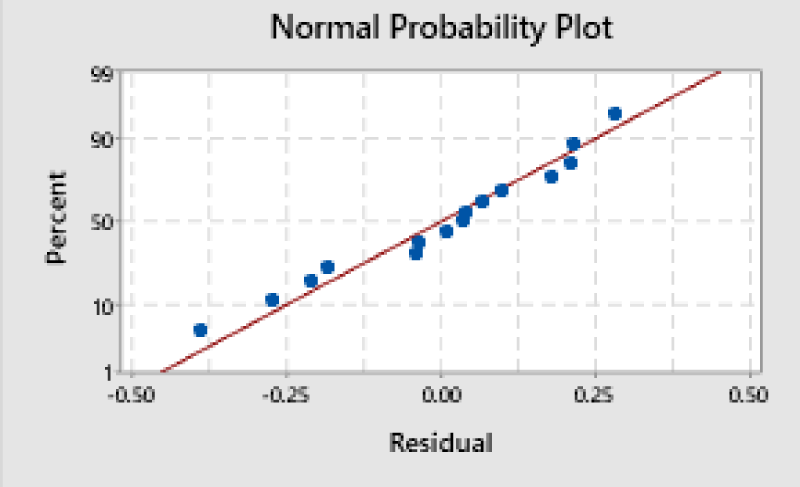
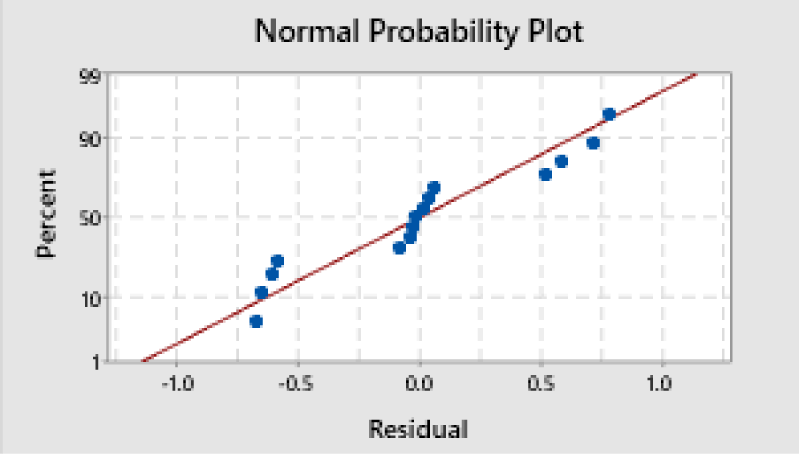
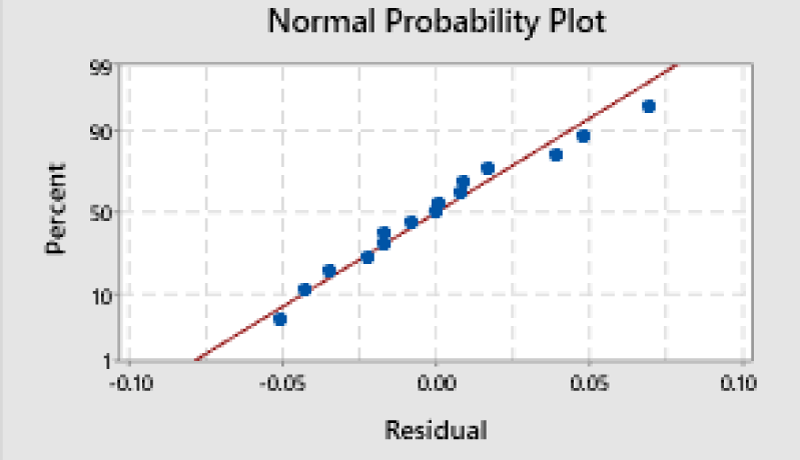
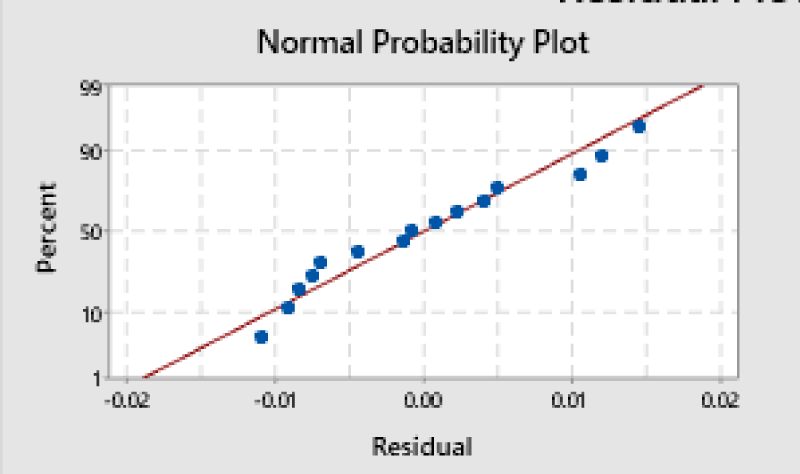
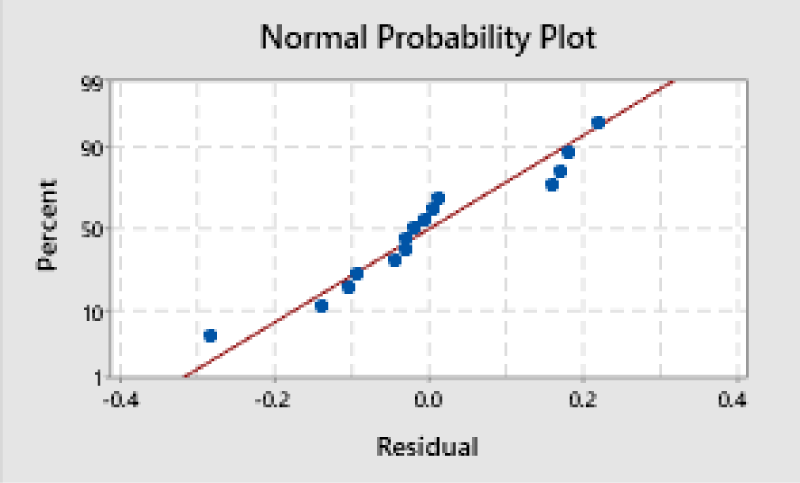


 Save to Mendeley
Save to Mendeley
